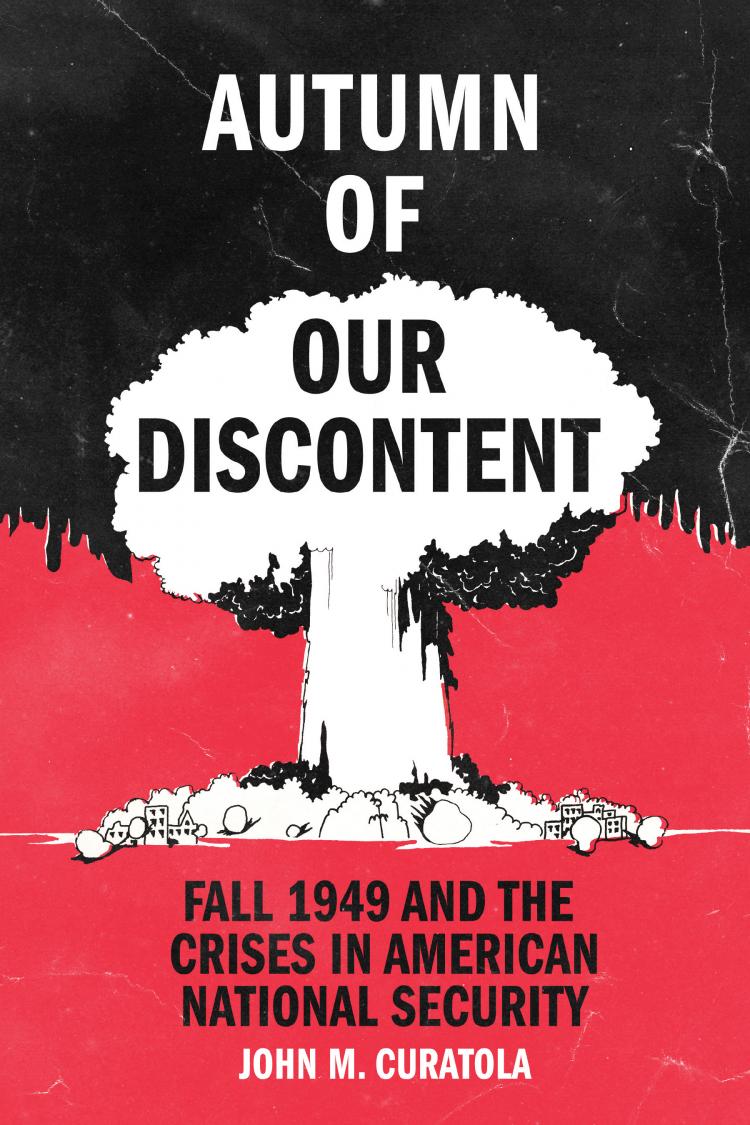Autumn of Our Discontent
- Subject: Spring 2022 Catalog | Cold War | Society of Military History Conference
- Format:
Hardcover
- Pages:
368pages
- Illustrations:
10 b/w photos
- Published:
June 15, 2022
- ISBN-10:
1682476200
- ISBN-13:
9781682476208
- Product Dimensions:
9 × 6 × 1 in
- Product Weight:
22 oz
Overview
In the Fall of 1949, a series of international events shattered the notion that the United States would return to its traditional small peacetime military posture following World War II. Autumn of our Discontent chronicles the events that triggered the wholesale review of United States national security policies. The review led to the adoption of recommendations advanced in NSC-68, which laid the foundation for America’s Cold War activities, expanded conventional forces, sparked a thermonuclear arms race, and, equally important to the modern age, established the national security state—all clear breaks from America’s martial past and cornerstone ideologies.
In keeping with the American military tradition, the United States dismantled most of its military power following World War II while Americans, in general, enjoyed unprecedented post-war and peacetime prosperity. In the autumn of 1949, however, the Soviet’s first successful test of their own atomic weapon in August was followed closely by establishment of the communist People’s Republic of China on October 1st shattered the illusion that American hegemony would remain unchallenged. Combined with the decision at home to increase the size of the atomic stockpile on and the on-going debate regarding the “Revolt of the Admirals,” the United States found itself facing a new round of crisis in what became the Cold War.
Curatola explores these events and the debates surrounding them to provide a detailed history of an era critical to our own modern age. Indeed, the security state conceived of in the events of this critical autumn and the legacy of the choices made by American policymakers and military leaders continue to this day.
About the Author
Editorial Reviews
“Autumn of Our Discontent confirms John Curatola's mastery of the early Cold War. In an era before mutual assured destruction, the Truman Administration struggled with security issues leading to the development of the hydrogen bomb and the indefinite mobilization embodied in NSC-68. Curatola has given us an evocative and convincing analysis of the 1949 events that produced these decisions. This is essential reading for anyone interested in American national security.” —Jonathan M. House, author of A Military History of the Cold War, 1944-1962, and professor emeritus of military history, U.S. Army Command & General Staff College
“Curatola’s richly researched and fascinating study maps the confluence of the Soviet atomic bomb, the rise of Communist China, and the internecine Air Force – Navy squabbles in fall 1949 produced a Clausewitzian 'paradoxical trinity' which cast the die for the development of NSC 68 and an unprecedented shift in American national defense policy.” —Frank A. Blazich, Jr., military history curator, National Museum of American History, Smithsonian Institution
“Curatola weaves an exciting and powerful narrative that brings a new perspective to a key turning point in American history. This reexamination of how U.S. defense strategy dramatically changed in the early Cold War is extremely relevant to present-day defense and foreign policy debates.” —Michael W. Hankins, curator, Smithsonian National Air and Space Museum, and author of Flying Camelot
“We tend to look back at seminal history with a belief that the course of events was as obvious to those that lived them as they are to those who read about them in hindsight. In reality, nothing could be farther from the truth; it is of this misnomer that John Curatola most directly dispossesses us. For what may seem obvious to us that lived through the end of the Cold War was far from a settled question in the critical year of 1949. With the Cold War just getting underway in the autumn if 1949, the events of that period have often become lost, forgotten, or taken for granted. It is against this backdrop that Curatola demonstrates the anything-but-settled questions over what the Cold War would be, how it would be fought, and who would win. The author’s excellent research combined with insightful analysis leave little doubt as to the fact that the fall of 1949 was a turning point in the course of the Cold War.” —Trevor Albertson, author of Winning Armageddon: Curtis LeMay and Strategic Air Command, 1948–1957




